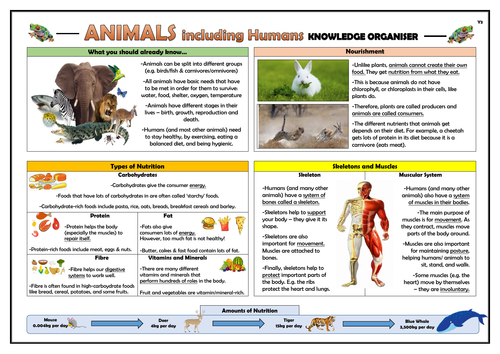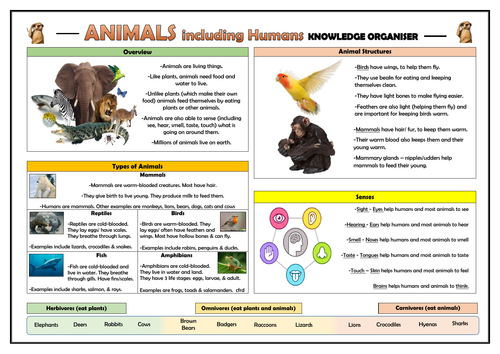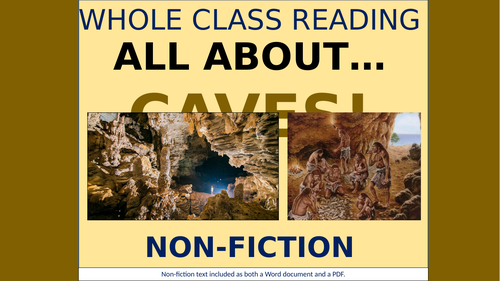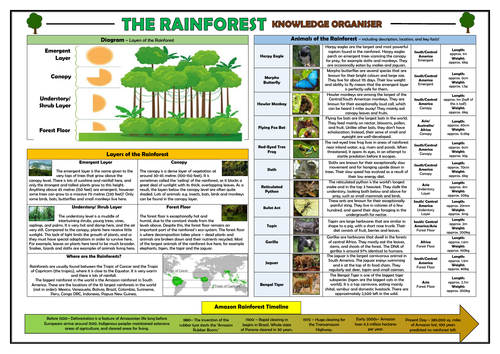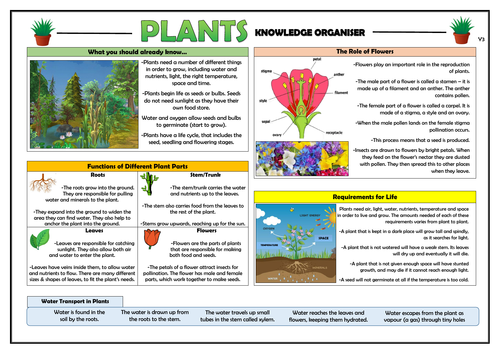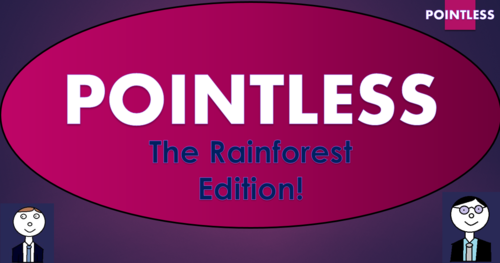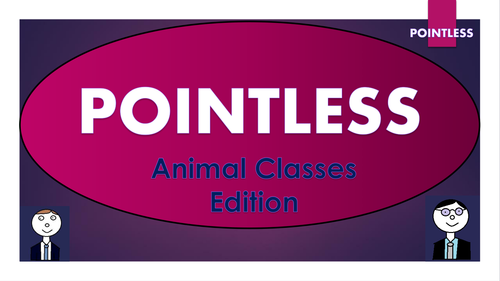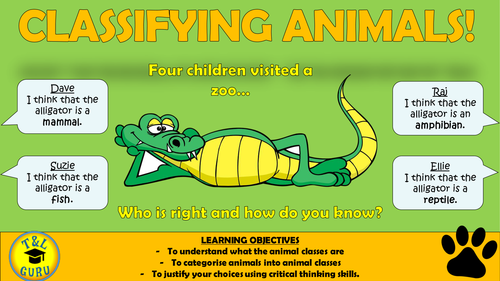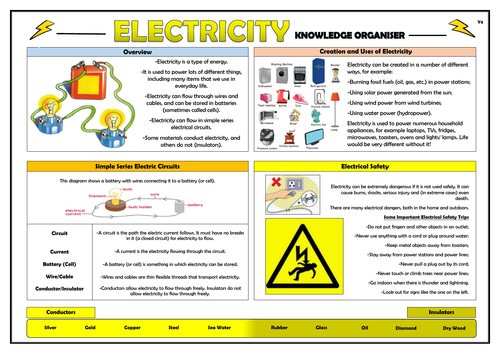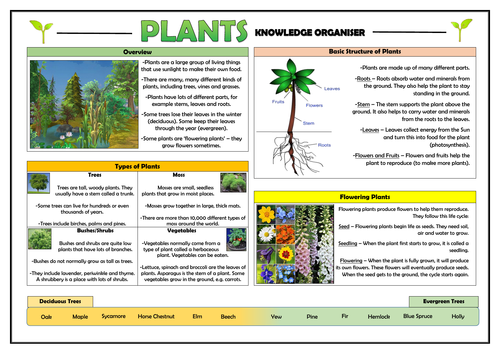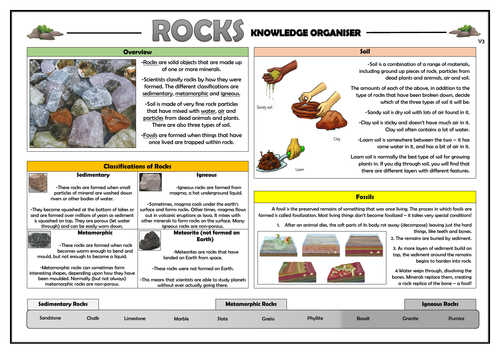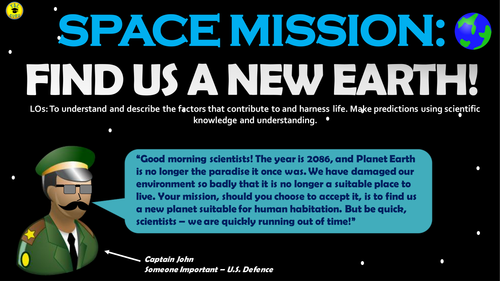
3k+Uploads
1896k+Views
2230k+Downloads
Primary science

Year 3 Animals including Humans Knowledge Organiser!
This clear, detailed and visually-appealing resource offers a complete reference point for Year 3 children, teachers and parents covering knowledge relating to ‘Animals including Humans’, as a part of their science learning. It contains comprehensive sections on:
Overview and ‘what you should already know’ (from their prior learning);
Types of Nutrition;
Amounts of Nutrition;
Animal Nourishment;
Skeletons and Muscular System;
Key Vocabulary (underlined).
The content is fully aligned with the NC expectations for Year 3 children relating to ‘Animals including Humans:’
-identify that animals, including humans, need the right types and amount of nutrition,
and that they cannot make their own food; they get nutrition from what they eat
-identify that humans and some other animals have skeletons and muscles for
support, protection and movement.
The resource is designed to be printed onto A3, and is provided as both a PDF and a Word version (so that you can edit if you want to). All images used are licensed for commercial use and are cited on a separate document (included).

Year 1 Animals including Humans Knowledge Organiser!
This clear, detailed and visually-appealing resource offers a complete reference point for Year 1 children, teachers and parents covering knowledge relating to ‘Animals including Humans’, as a part of their science learning. It contains comprehensive sections on:
Overview;
Types of Animals (mammals, reptiles, amphibians, birds and fish);
Herbivores, Carnivores and Omnivores;
Comparing Animal Structures;
Senses;
Key Vocabulary (underlined).
The content is fully aligned with the NC expectations for Year 1 children relating to ‘Animals including Humans:’
-identify and name a variety of common animals including fish, amphibians, reptiles,
birds and mammals
-identify and name a variety of common animals that are carnivores, herbivores and
omnivores
-describe and compare the structure of a variety of common animals (fish,
amphibians, reptiles, birds and mammals, including pets)
identify, name, draw and label the basic parts of the human body and say which part of the body is associated with each sense.
The resource is designed to be printed onto A3, and is provided as both a PDF and a Word version (so that you can edit if you want to). All images used are licensed for commercial use and are cited on a separate document (included).

Investigating Light - Two Non-Fiction Reading Comprehension Sessions!
These whole class reading sessions aim to develop children’s fluency and comprehension skills, whilst enabling them to gain a deeper understanding of light, through reading a comprehensive age-appropriate non-fiction text investigating the nature and properties of light. The text aligns with the upper KS2 curriculum expectations for light.
The reading is followed by a series of activities aiming to develop children’s retrieval, explanation, inference, prediction and summarising skills. It also contains a vocabulary check immediately after the extract is read to clarify any unfamiliar/ difficult language.
The tasks are comprised of quick-check questions, solo thinking, pair/ group discussions and deeper thinking activities. The text is well-presented, clear and informative and is freely available on Epic (the link to the text is hyperlinked into the first slide of both PowerPoint presentations).
The session is best suited for children in years 4-6 although with suitable adaptations it could feasibly be used with slightly younger and older year groups.
Bundle Sale

Huge Primary Geography Knowledge Organisers Bundle!
These clear, detailed and visually-appealing resources offer a complete reference point for planning, learning and revising all areas of the entire Primary Geography National Curriculum.
The KS1 knowledge organisers included are:
-Polar Explorers;
-The Seven Continents;
-Oceans and Seas;
-Capital Cities;
-The United Kingdom;
The KS2 knowledge organisers included are:
-Rivers;
-Rainforests;
-Latitude and Longitude;
-Human and Natural Disasters;
-North America;
-South America;
-Europe;
-Italy (European Comparison);
-Greece (European Comparison);
-Peru (South America Comparison);
-London;
There is also an organiser for each key stage that can be adapted for whichever area of local study you choose to cover (the templates provided focus on ‘Exploring Essex’ for KS1 and ‘East Anglia’ for KS2.)
The organisers are separated into logical compartments, based on the key curriculum expectations.
Each resource is designed to be printed onto A3, and is provided as both a PDF and a Word version (so that you can edit if you want to). All images used are licensed for commercial use and are cited on a separate document (included).

All About Caves - KS2 Non-Fiction Reading Comprehension!
This whole class reading session aims to develop children’s fluency and comprehension skills through reading an information factfile about caves. It includes information about how caves are formed, use of caves, cave wildlife and well-known examples of caves.
The reading is followed by a series of activities aiming to develop children’s VIPERS skills: vocabulary, inference, prediction, explanation, retrieval, sequencing and summarising. It also contains a vocabulary check immediately after the extract is read to clarify any unfamiliar/ difficult language.
The tasks are comprised of quick-check questions, solo thinking, pair/ group discussions and deeper thinking activities. The extract needed is provided in both PDF and Word format.
The session is best suited for children across KS2, I have previously used the resources with years 3, 4, and 5.

Rainforests KS2 Knowledge Organiser!
This clear, detailed and visually-appealing resource offers a complete reference point for students learning or revising knowledge relating to rainforests. It contains comprehensive sections on:
The different layers of the rainforest (emergent, canopy, understory/shrub, forest floor) and diagram;
Information about where rainforests can be found in the world;
Animals of the rainforest (including distribution, images, habitat, size/weight, and key facts);
Timeline of deforestation;
The resource is designed to be printed onto A3, and is provided as both a PDF and a Word version (so that you can edit if you want to). All images used are licensed for commercial use and are cited on a separate document (included). The resource is most suitable for students in KS2 or KS3.

Year 3 Plants Knowledge Organiser!
This clear, detailed and visually-appealing resource offers a complete reference point for Year 3 children, teachers and parents covering knowledge relating to ‘Plants’, as a part of their science learning. It contains comprehensive sections on:
What you should already know (from earlier learning);
Functions of Plant Parts;
The Role of Flowers (including pollination);
Plant Requirements for Life;
Water Transport in Plants;
Key Vocabulary.
The content is fully aligned with the NC expectations for Year 3 children relating to ‘Plants’:
-identify and describe the functions of different parts of flowering plants: roots,
stem/trunk, leaves and flowers
-explore the requirements of plants for life and growth (air, light, water, nutrients from
soil, and room to grow) and how they vary from plant to plant
-investigate the way in which water is transported within plants
-explore the part that flowers play in the life cycle of flowering plants, including
pollination, seed formation and seed dispersal.
The resource is designed to be printed onto A3, and is provided as both a PDF and a Word version (so that you can edit if you want to). All images used are licensed for commercial use and are cited on a separate document (included).
Bundle Sale

Year 6 Science Knowledge Organisers Bundle!
These clear, detailed and visually-appealing resources offer a complete reference point for Year 6 children, teachers and parents covering all of the science knowledge pertinent to the National Curriculum.
The knowledge organisers included are focused on:
-Animals, including Humans;
-Evolution and Inheritance;
-Electricity;
-Living Things and their Habitats;
-Light.
The organisers are separated into logical compartments, based on the key curriculum expectations.
Each resource is designed to be printed onto A3, and is provided as both a PDF and a Word version (so that you can edit if you want to). All images used are licensed for commercial use and are cited on a separate document (included).

Year 5-6 Living Things and their Habitats: Knowledge Retrieval Activities Pack!
This resource offers a wide range of knowledge retrieval activities for those studying Living Things and their Habitats in Years 5-6.
It covers information including classification of animals (including the Linnaeus Classification system) , features of living things, naturalists and animal behaviourists, plant life cycles, key, animal life cycles and key vocabulary.
There are a wide range of interesting and thought-provoking activities (over 30 slides in total) which help children to secure all of the important information from the unit. Research-approved activities include:
-Quick Fire Questions;
-Picture Stimulus;
-Retrieval Grid;
-Fill in the Blank;
-Vocabulary Busters;
-Fact Dump;
-Rank 5;
-Detective/ Questioning Tasks;
-Anagrams;
These resources have been tried and tested in the classroom and have proven successful in helping children to consolidate key information within this unit.

The Rainforest - Pointless Game!
Based on the popular game show ‘Pointless,’ this resource is perfect for use as a whole lesson resource, enrichment option, or revision tool. Editable, so that you can change to any other topic or change questions. (I’ve also added a blank template so that you can make your own games from scratch). Containing 25 slides of sound clips, engaging visuals, and suitably challenging questions, this resource is effective at both promoting engagement and enhancing learning. There are several full rounds of questions to build or revisit knowledge of The Rainforest.
Round 1. Countries with Rainforests
Round 2. Birds of the Rainforest
Round 3. Name the Rainforest!
Round 4. Anagrams Round - (Layers of the Rainforest)
Round 5. Mammals of the Rainforest
The nature of this game ensures that the resource can challenge students of all levels.
A blank template has also been added, so that you can create your own games!

Animal Classes - Pointless Game!
Based on the popular game show 'Pointless', this resource is perfect for use as a whole lesson resource, enrichment option, or revision tool. Editable, so that you can change to any other topic or change questions. (I've also added a blank template so that you can make your own games from scratch). Containing almost 30 slides of sound clips, engaging visuals, and suitably challenging questions, this resource is effective at both promoting engagement and enhancing learning.
There are several full rounds of questions to build or revisit knowledge of different animal classes and types - an important KS1 Science topic within the National Curriculum.
Round 1. Reptiles
Round 2. Animal Classes
Round 3. Anagrams Round
Round 4. Birds
The nature of this game ensures that the resource can challenge students of all levels.

Classifying Animals!
This detailed and engaging lesson enables students to gain an understanding of what animal classes are, and which animals belong to the different categories. Furthermore, they learn to categorise animals themselves, using scientific knowledge of the features of each animal class. Students justify their choices using critical thinking skills.
Students learn through a number of fun and interactive tasks, which enable them to:
- Define each animal class and understand its features;
- Exemplify each animal class, justifying their choices;
- Use research and investigative skills to categorise animals for whom the class is not immediately obvious;
- Evaluate the learning and understanding of themselves and their peers.
The resources include:
-Visually engaging and comprehensive whole-lesson presentation;
-Resources for the card-sorting activity;
-A categorising and justifying worksheet (and answer sheet for teacher);
-An investigation log;
-Step-by-step lesson plan.
All images are licensed for commercial use, and are cited on the final page of the slide.

Year 4 Electricity Knowledge Organiser!
This clear, detailed and visually-appealing resource offers a complete reference point for Year 4 children, teachers and parents covering knowledge relating to ‘Electricity’, as a part of their science learning. It contains comprehensive sections on:
Overview;
Simple Series Electric Circuits;
Creation and Uses of Electricity;
Electrical Safety;
Conductors and Insulators;
Key Vocabulary.
The content is fully aligned with the NC expectations for Year 4 children relating to ‘Electricity’:
-identify common appliances that run on electricity;
-construct a simple series electrical circuit, identifying and naming its basic parts,
including cells, wires, bulbs, switches and buzzers;
-identify whether or not a lamp will light in a simple series circuit, based on whether or not the lamp is part of a complete loop with a battery;
-recognise that a switch opens and closes a circuit and associate this with whether or not a lamp lights in a simple series circuit;
recognise some common conductors and insulators, and associate metals with being good conductors.
The resource is designed to be printed onto A3, and is provided as both a PDF and a Word version (so that you can edit if you want to). All images used are licensed for commercial use and are cited on a separate document (included).

Year 1 Plants Knowledge Organiser!
This clear, detailed and visually-appealing resource offers a complete reference point for Year 1 children, teachers and parents covering knowledge relating to ‘Plants’, as a part of their science learning. It contains comprehensive sections on:
Overview;
Types of Plants;
Deciduous and Evergreen Trees;
Basic Parts of a Plant;
Flowering Plants;
Key Vocabulary.
The content is fully aligned with the NC expectations for Year 1 children relating to ‘Plants:’
-identify and name a variety of common wild and garden plants, including deciduous
and evergreen trees
-identify and describe the basic structure of a variety of common flowering plants,
including trees.
The resource is designed to be printed onto A3, and is provided as both a PDF and a Word version (so that you can edit if you want to). All images used are licensed for commercial use and are cited on a separate document (included).

Year 3 Rocks Knowledge Organiser!
This clear, detailed and visually-appealing resource offers a complete reference point for Year 3 children, teachers and parents covering knowledge relating to ‘Rocks’, as a part of their science learning. It contains comprehensive sections on:
Overview;
Classifications of Rocks;
Soil;
Fossils;
Examples of Types of Rocks;
Key Vocabulary.
The content is fully aligned with the NC expectations for Year 3 children relating to ‘Rocks’:
-compare and group together different kinds of rocks on the basis of their appearance and simple physical properties;
-describe in simple terms how fossils are formed when things that have lived are
trapped within rock;
-recognise that soils are made from rocks and organic matter.
The resource is designed to be printed onto A3, and is provided as both a PDF and a Word version (so that you can edit if you want to). All images used are licensed for commercial use and are cited on a separate document (included).
Bundle Sale

Year 5 Science Knowledge Organisers Bundle!
These clear, detailed and visually-appealing resources offer a complete reference point for Year 5 children, teachers and parents covering all of the science knowledge pertinent to the National Curriculum.
The knowledge organisers included are focused on:
-Animals, including Humans;
-Forces;
-Earth and Space;
-Living Things and their Habitats;
-Properties and Changes of Materials.
The organisers are separated into logical compartments, based on the key curriculum expectations.
Each resource is designed to be printed onto A3, and is provided as both a PDF and a Word version (so that you can edit if you want to). All images used are licensed for commercial use and are cited on a separate document (included).
Bundle Sale

Holiday Fun Activities Bundle!
Included in this bundle are hours of fun, interactive, and productive activities that have been tried and tested with hundreds of happy children. Not only are the activities engaging, they also enable young people to develop their key skills in areas as varied as: Literacy, Numeracy, Science, Art and Design, PSHE, and Speaking and Listening.
Included within the bundle are the following popular resources:
- Murder Mystery Investigation: Students use exhibits, maps, evidence, and budgeting skills in order to solve a murder mystery case;
- Fantasy Football Club Group Project: Students design and resource their own football team from scratch, using a limited budget and selection of classic and modern footballers;
- Stating Your Case for the World’s Greatest Sportsperson - Students use their researching, persuasive writing, and speaking and listening skills to argue the case for the best sportsperson of all time;
- Space Mission: Find Us A New Earth! - Students are given an imaginative scenario and real-life information about the current most hospitable exo-planets, and must use their scientific and literacy skills to build a case for the next planet humans should inhabit;
- Crazy Animal Limericks Anthology - Loads of fun animal limericks for students to read, and comprehension/ creative tasks for them to complete.
All that you have to do is print and go, everything that you need for these resources (including teacher guidance) is provided.
All images are licensed for commercial use, and are cited on the final slides of the presentations.

The Life Cycle of a Butterfly - Whole Class Reading Session!
This whole class reading session aims to develop children’s fluency and comprehension skills, whilst enabling them to gain a deeper understanding of life cycles, through reading a short, age-appropriate ‘Life Cycle of a Butterfly’ non-fiction text.
The reading is followed by a series of activities aiming to develop children’s retrieval, explanation, inference, prediction and summarising skills. It also contains a vocabulary check immediately after the extract is read to clarify any unfamiliar/ difficult language.
The tasks are comprised of quick-check questions, solo thinking, pair/ group discussions and deeper thinking activities. The text is freely available on Epic - the hyperlink is provided on the first slide.
The session is best suited for children in years 1-3, although with minor adaptations it could feasibly be used with slightly younger and older year groups.

Space Mission: Find us a New Earth!
The year is 2086, and the students are needed for a special mission!
This space mission has been designed to provide students with a fun and interesting group challenge, whilst also building key skills in critical thinking and collaboration, and essential knowledge for Science, English, and Mathematics.
Students are placed in a scenario in which Earth is no longer habitable, and humans must seek to move to another planet in the Universe. Compiled for them is information on each of the potentially most habitable planets that are known to man (these are the real planets that have been confirmed by NASA and other agencies as having the most potential for life). In reading the key information, students will be drawing upon their knowledge of Science terminology, and will need to make some Maths calculations to work out implications of living on different planets.
What will become clear fairly quickly is that none of the potential planets are perfect, and they must use reasoned judgements to determine which of them have cons that could perhaps be overcome. They then present their ideas, using clear and articulate speaking and listening skills, and write up their report, using appropriate written communication (a scaffold is provided to frame this).
Everything is provided for you to download, print, and teach:
- A comprehensive, whole-activity PowerPoint that guides the students through the mission;
- Detailed and colourful information sheets on each of the contender planets for being the next Earth (these include links to amazing websites that can provide the children with more information);
- A 'Pros and Cons' scaffold, to help students record their findings;
- An information sheet on the 'habitable zone' around stars;
- A scaffold for writing up findings;
- Sorting cards for help with determining the key features of habitable planets;
- Full teacher guidance.
Considering the time and effort that it took to create these resources, I think that they offer exceptional value. Whenever I have used this activity before, it has taken at least 2-3 lessons, including the introduction, starter challenge, main mission, presentations, and write-up. I originally have used this with mid-ability Year 6,7, and 8 groups, but colleagues have easily adapted it for students across key stages 2-4.
All images have been cited at the end of the PowerPoint presentation and are licensed for commercial use.

KS2 Solar System Knowledge Organiser!
This clear, detailed and visually-appealing resource offers a complete reference point for KS2 students learning or revising knowledge relating to the The Solar System. It contains comprehensive sections on:
- The Sun, Planets, and Dwarf Planets;
- Information about their moons;
- Other Bodies in the Solar System;
- Human Spaceflight;
- Timeline of Discovery;
The resource is designed to be printed onto A3, and is provided as both a PDF and a Word version (so that you can edit if you want to). All images used are licensed for commercial use and are cited on a separate document (included).

